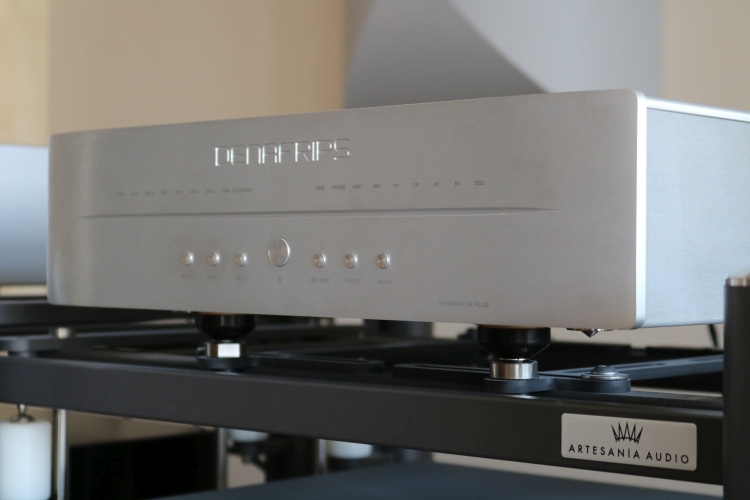
Listening
Because AES/EBU is my default connection method and I have been listening with the Grimm MU1 a lot lately, I started with this server, connected with a Jorma AES/EBU cable to either the Denafrips or the Aqua DAC, which are connected to the Audio-GD preamp using the Driade Flow Link Reference 808 RCA cable. Between the preamp and the power amp, I use the Driade low Link Reference 808 XLR cable.
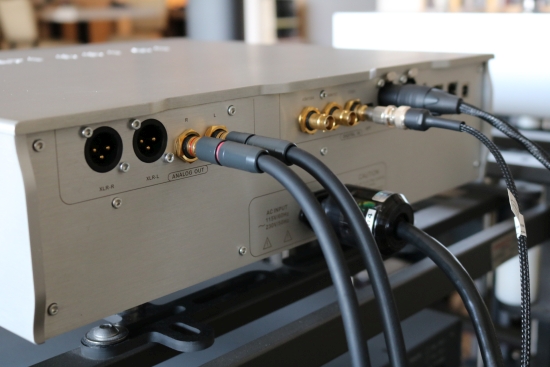
After having listened to the Terminator Plus for several days while making sure that it was properly warmed up, and swapping back to the Formula xHD (with V2 output board), there are obvious differences, but also many similarities. While the two DACs were easy to tell apart, I really liked them both and it only took me seconds to get accustomed to either. At this point, I knew that this was going to be a tough test.
Right off the bat, it’s clear that the Terminator Plus is a superbly transparent, extremely neutral and linear, and supremely highly-resolving DAC. There’s nothing in my arsenal that can beat it in these regards, or most other sonic aspects, for that matter. In these aspects, even the CH C1 DAC is not significantly better. I’ll let that sink in…
What we’re stepping into here is no longer a matter of quality but one of perspective and personal preference. Nevertheless, I’ll do my best to explain the differences. Coming from the Denafrips, the Aqua is earthier, more sonorous, meatier. Its presentation is soothing and cohesive and not focused on any one aspect. It’s comparatively slightly smooth but it still presents the musical whole with very little editorialization. I should also mention that I never before felt the Formula DAC to be smooth. In fact, until the Denafrips Venus, it was the most neutral and linear DAC that I had heard.
Speaking of which, as good as it was in many aspects, the Venus did not entirely convince me because it had a slightly technical presentation with a mild synthetic tonality. With the Terminator Plus, these restraints have been removed altogether. There’s simply not a hint of artifice to be found. However, the Terminator Plus is so extremely transparent and precise, and indeed analytical, that some people might experience it as being overly clean, even if I don’t think it is analytical to the point of being clinical. Upon first listen after swapping, the Denafrips seems leaner than the Aqua but it would be just as valid to say that the Aqua sounds fuller. In any event, the Terminator Plus’s bass is nimbler and more precise with absolutely no excess fat or weight and this can make the DAC feel lightweight even if it really isn’t. In fact, its bass is as accurate as I have heard it. It can appear subtle, light, and unassuming, or seem like chiseled-from-granite depending on the recording and it has a kind of crispness and immediate incisiveness that makes many other DACs sound a little overweight.
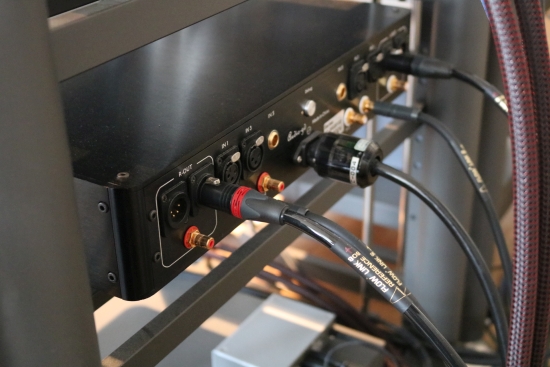
I know that I tend to ramble on about bass. But it’s this foundation onto which the rest of the frequency spectrum is built. With the Terminator Plus, the superbly accurate bass makes not only bass drum and bass lines sound more realistic, everything sounds more convincing, from vocals to percussive sounds and from synth stabs to woodwinds. It all sounds breathtakingly pure. No doubt, this overall high precision makes that the DAC also has remarkably distinct imaging. Overall, the Terminator’s soundstage isn’t really any wider or deeper than that of the Aqua but because it is so very crisp and articulate, everything within it seems to be spaced out more and the performance becomes more captivating because of this.
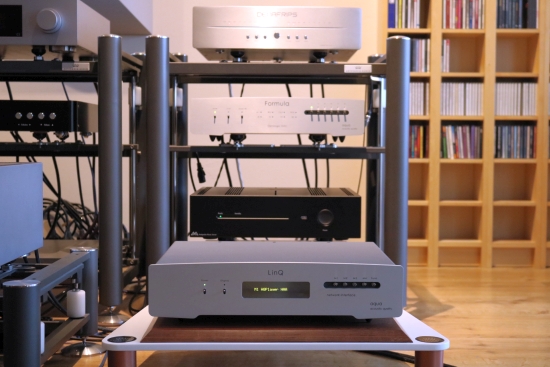
Especially after the Terminator had wowed me with its high precision and wonderful imaging, mentally, I was noting that the Denafrips might be the better DAC. But when switching to the Formula xHD, that mental note is immediately challenged. Yes, the Aqua is less endowed in terms of ultimate precision but somehow, still, it sounds just right. The music comes through and my foot starts tapping. Maybe it’s due to its slightly fuller and slightly more ballsy sound but even if my mental engagement is lowered a notch, emotionally, I’m involved immediately. After having switched a couple more times, I think it’s mostly a matter of higher precision versus a more forgiving sound and with that, a very personal decision.
I hasten to add that the Denafrips, unlike the Weiss DAC502, is not a DAC that veers on the technical side rather than being musically appealing. Even if it has a cleaner delivery, the Terminator Plus never fails to involve me emotionally. One does need to make sure to have the rest of the system in order as shouty tweeters are not accommodated and badly recorded source material will also sound bad.
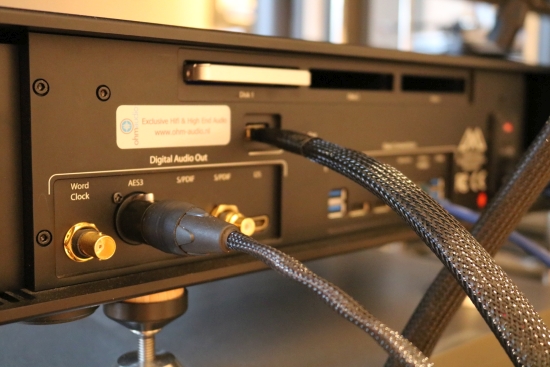
AES versus USB
Now that I have the Terminator Plus’ performance mostly pegged using the Grimm source, it’s time to see how the various inputs compare. First, let’s switch to the Antipodes K50 to see how the Denafrips’ USB input compares to the AES/EBU input.
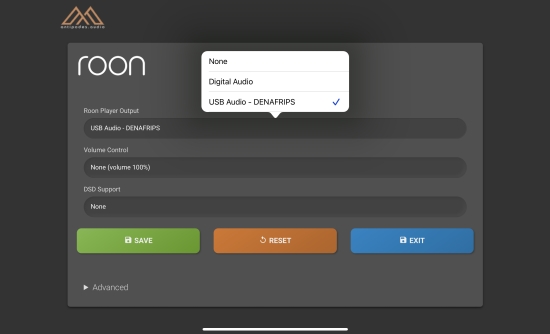
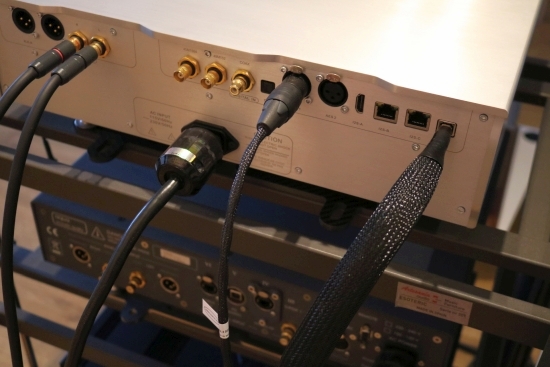
Fourplay has always had a thick and warm sound. Their song Chant sounds appropriately cuddly but arguably a little too thick through the inherently rather smooth-sounding K50 (especially when using Roon) and using the Jorma AES/EBU cable. When switching to USB using the Final Touch Audio Callisto, remarkably, the sound becomes significantly more incisive and concrete, while retaining Fourplay’s intended warmth. This is remarkable because the Callisto normally provides a particularly free-flowing delivery meaning that the difference is induced by the Terminator’s USB input section. It’s also very interesting to note that the USB connection seems to greatly reduce the Roon-induced extra warmth. Apparently, their proprietary solution is indeed something special! However, I also note that the USB input sounds more spacially restrained, the soundstage doesn’t breathe quite as freely as it does with the AES input. This is nothing that the Denafrips can be blamed for, though, as I found this is the case with any server that I tried. It seems to be a limitation or “feature” of the format.
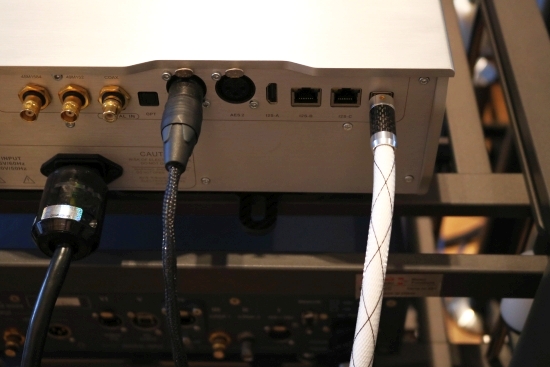
Still, I had to give the Vermouth Reference USB cable a go. Well, I’ll be… the music grabbed me right away! Not only did the Vermouth instill the music with precisely the right amount of warmth, but it also re-enabled the flow and soundstage breathing of the AES input, while retaining the Denafrips’ USB input’s higher level of precision and transparency. Wow. I did not see that coming. This is the thing with USB – the quality of the connection is extremely dependent on the implementation of the interface on both ends, as well as on the cable. This is also true for AES/EBU, but certainly to a lesser extent in my findings thus far.
Continuing the comparisons with different styles of music, including soul, electronic, and jazz, focused more on rhythm and transient behavior, it’s clear that the USB connection consistently provides the most technically accurate sound. With this connection, the transient behavior is most impressive, as are the articulation and transparency. However, with music not focused on transient but more on ambiance, my old argument against USB makes itself known again: the depth of imaging.
At this point, to shine additional light on the USB versus AES/EBU matter, I added in the Aqua LinQ streaming endpoint using HQPlayer embedded on the unit itself (Aqua Core module), meaning that Roon on the K50 streams in the NAA format directly to the LinQ. This results in a sound that is tighter and more incisive than when using AES/EBU straight from the K50 but while retaining much of its flow and depth of imaging. Granted, the K50 all by itself remains the smoothest and most organic, but the added zip and impact of the LinQ make up for this, and on balance, I prefer this rendition with most music.
Going back once more to the direct K50 to Terminator USB connection using the Vermouth cable it must be said that this still provides the technically most precise rendition. The bass is tighter and more articulate, the midrange cleaner and clearer, and transients sharper and more sudden, and to top it off, the low-level detail retrieval is also unbeatable. So, as indicated, a personal matter. What do I prefer? Well, it depends on the music style. With smooth music such as soul or whenever there are sensitive vocals in the mix, so far, I tend to prefer the AES/EBU connection but with fast jazz or other overtly transient-driven music, the USB connection is really fantastic.
Somehow, irrespective of the cable, USB paints a flatter and less organic picture than other connections and, alas, the same is true with the Terminator Plus. This limitation aside, this DAC’s USB input provides hugely impressive sound and for those who are less hung up to the organic or emotional side of the music, it will likely be the preferred choice.
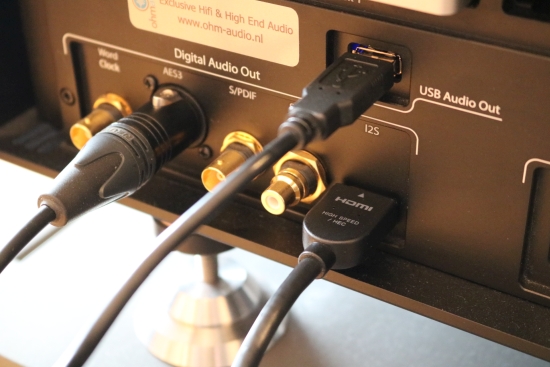
I²S
The best HDMI cable I have is a relatively simple Sony cable. Theoretically, the I²S connection should always beat any other connection that relies on muxed-in clock signals such as S/PDIF and AES/EBU. But as previous comparisons already confirmed that the Jorma AES/EBU cable will provide better sound when the competing I²S cable is said Sony sample, I will swap the Jorma cable for a much more standard Mogami cable so that the two can be fairly compared.
On the topic of clock signal, USB connections these days are almost always Asynchronous and thus should not be affected by source clock issues, or certainly not as much as they seem to be, but clearly, there’s something else going on with the format. Nevertheless, I will include USB in this final comparison but to keep it fair, using a standard “freebie” cable instead of the Vermouth.
First, I tried getting the LinQ to play to the Terminator Plus using standard Cat6 S/FTP RJ45-terminated network cable. The Denafrips manual mentions selecting the I²SA-input when configuring the pinout and does not mention the RJ45 B and C inputs but I tried it nevertheless. First, selecting the A-input as indicated in the manual and then also by selecting the actual physical input that I used and going through all the pinout settings once again. Alas, none of the Denafrips’ pinout configurations resulted in sound from either of its two RJ45 inputs. Thus, what remains is its HDMI input which I tried next using the K50.
Now freshly connected with three standard cables, I returned to the playlist and listened to I²S, then AES/EBU, and finally USB.
Right away, with no required configuration, the K50 played ball with the Terminator’s I²S input A. Not only did it play ball, it played a mighty fine game! Just as the USB input, the connection seemed to mitigate the extra Roon-induced warmth to provide what sounds like a more direct connection. Switching to the AES/EBU input, I found no redeeming qualities whatsoever. Rather, the sound became more closed in, less fleshed-out, leaner in the bass, and flatter in terms of soundstage depth, considerably so, actually. Especially reverbs and decays went way deeper with the I²S connection than with the USB connection. This is not really a surprise, though, because in my experience, I2S is always the better connection, so long as the competing cables are of equal quality. What was a surprise is the magnitude of the difference. Sometimes, the differences between S/PDIF or AES/EBU and I²S are really subtle, like a cloudy day versus a sunny day (such as with the Jay’s Audio components), but in this case, it really is a matter of day and night. It reminded me of the time when I compared a Wadia 861 CD player’s internal ClockLinked connection to an external loop using its outputs and inputs and the sound just collapsed and lost a lot of listener involvement as a result. Anyway, so far, I²S is clearly my favorite connection to use, if available.
In the interest of full disclosure, before going to the standard USB cable, I connected the Jorma AES/EBU cable and compared the sound to the I²S sound. Ohlala, this was interesting! Now, the two inputs sounded much more alike. The bass fullness, tonality, and overall fleshing-out were pretty much identical. Kudos to the Jorma cable for squeezing so much from a technically relatively inferior format. But I had to admit that the soundstage depth was still better with the I²S cable. The latter ultimately also provided an emotionally slightly more involving sound.
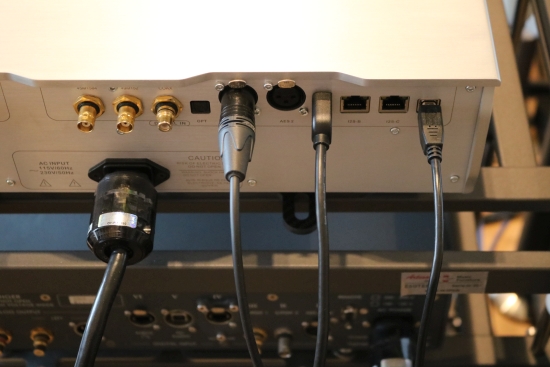
Then, finally, for the comparison between I²S and USB, both using standard cables. I was expecting the USB input to disappoint but that wasn’t the case. It was leaner and tonally less saturated but otherwise actually pretty good. As heard before, it provided exceptionally good detail retrieval (although not better than the I²S connection) and very good renditions of the reverbs. However, once again, the USB connection just sounded cooler and more technical, less alive and breathing, spatially more restricted, and ultimately, emotionally less compelling.
No matter how well-implemented a DAC’s USB section is (and Denafrips absolutely did a fine job here), in my experience, I²S is simply the better connection, and this comparison proves it once again. The upside is that the results as described were attained with a very simple HDMI cable meaning that cost is not at all an aspect but, naturally, your source does need to be outfitted with this connection method.
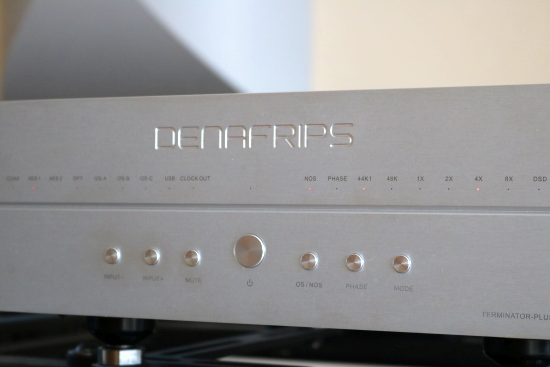
Conclusion
This DAC is simply without flaws. It sets the standard not only at its retail price but it’s one of the finest DACs that I have heard irrespective of the cost. Whether or not you will like its super-transparent and ultra-precise rendering of the music is a personal matter but I will say that it’s rare for an audio component with such extreme levels of precision to remain refined and nuanced while also being musically appealing and emotionally engaging. Direct competitors in order of ascending retail prices are the Mola Mola Tambaqui, the Aqua Formula xHD, and the CH Precision C1. All three offer different facilities and provide different tonal- and spatial presentations. But these differences are not nearly as large as one might suspect based on the cost. Most impressively, none of the other DACs manage greater levels of transparency, detail retrieval, or overall precision.
As far as I am concerned, the unit has only two downsides and neither has anything to do with its sound quality: the non-intuitive configuration of its parameters and the absence of remote control. Nevertheless: highly recommended!

More Denafrips
Denafrips Ares II, Pontus II, Venus II, and Terminator Plus compared
Also, keep an eye on the HFA YouTube channel, as a Denafrips video is in the making!
External Links
Manufacturer: Denafrips
Available from: Vinshine Audio

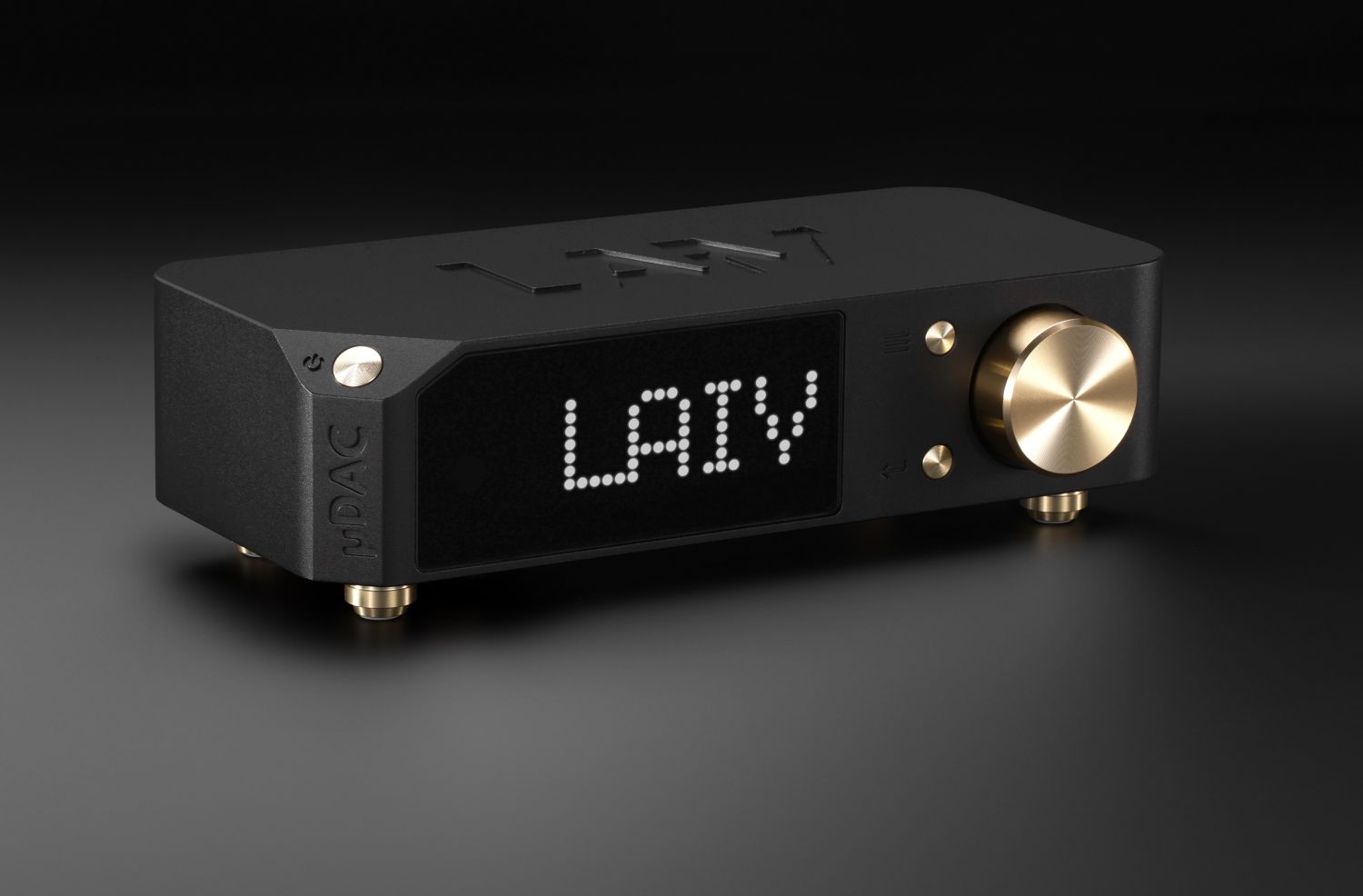






Just another great review. I always check your website and also take a daily look at The Daily Audiophile to see what you’re up to. I wish you could test and compare the MSB Reference ($40,000 US!).
I do the same. The first thing I check on The Daily Audiophile site is for any new reviews on HiFi-advice.
Really liked this review. Especially how you compared the different connections.
Please do add the Audiobyte Hydra stack or any product from Rockna to your review list. Thanks.
Good to hear, Aman! Rockna is on the to do list.
Thanks Vladimir, also nice to hear that people are actively following the Daily Audiophile site. MSB is on the list of things to do:-)
Hi Christiaan, Another great review, it’s especially informative as I know you have had actual experienced with so many excellent units so your comments hold so much more weight for me. I recently received my Antipodes K30 server and presently burning in. Even on first listen I have to agree that it sounds quite quite a leap from my EX. It’s running into my relatively new Sonnet Morpheus Dac which I really like. I was wondering if you have had a chance to try this Dac yet?
Thanks for the great feedback, Rodney. I’ll look into the Sonnet products, can’t promise anything though.
As a TP owner I have experimented with several I2S cables. Improvements are readily apparent with $$ spent. I think you are only scratching the surface with a Sony cable.
I use an inexpensive Denafrips Iris DDC to change USB to I2S while taking advantage of the external clock. You missed the secret sauce. If you try it (or use a Gaia for convert AES/EBU to I2S) and add a good I2S cable you might be brought to tears.
Hi Stephan, indeed, there might be even more to be had because the Jorma AES cable won from the Sony I2S connection in an earlier experiment. Your trick with the Iris DDC sounds interesting but at the end of the day, you’re still using the USB format, only converting it inside the Iris unit rather than in the Terminator. But maybe the clock inside the Iris makes an improvement, that’s certainly possible.
I appreciate the reply Christiaan. I have only compared the USB and I2S inputs of the Terminator. My Innuos Statement outputs USB and Ethernet, the Terminator unfortunately does not take Ethernet input.
Denafrips contends the I2S is the better input over USB so rather than just re-working the USB I am using the better input. I suspect you will agree USB sending and receiving is fraught with potential issues hence all the re-clockers and such.
While the Statement is touted as having a very very good USB output it is made shockingly better with the DDC conversion to I2S.
The Iris’s is a femto clock but it will accept the OXCO clock out from the Terminator so my Iris is running on the Terminators OXCO and that clock is one of the reasons the Terminator sounds so good.
Indeed, how nice would it be if the Denafrips DACs would have Ethernet inputs! But alas. I agree that the quality of the clock is very important (as several experiments with music servers and cd players have shown) and I also agree that I2S is the better connection and that USB has many potential issues. And because its success is so dependent on the implementation of the interfaces on both ends, it’s just not as consistent in its behavior as other connections. Your advice concerning the external I2S conversion while taking advantage of the Terminator’s clock is well noted. Hopefully, this will inspire others to experiment!
Thanks Christian another thorough well written review. You’ve done some excellent reviews of lots of digital gear but I’m pretty sure you’ve never reviewed an Audio Note Dac before. I would suggest you check one out as a bit of a departure from some of the really tech driven Dacs you’ve been reviewing lately. Needless to say a bit of an AN fanboy here with a 26 year old Dac-3 Signature still going strong.
Cheers,
Jon
Hi Jon, Audio Note sure is an interesting brand to take a closer look at. I’ve often heard AN systems or components at shows and in friends’ systems but never have I had a unit in my system. When I get the chance, I will surely take it.
Hi Christiaan
Great review!
Can you please review a small group of R2R dacs, maybe from 800 to 2000 euros? After not really connected with the Chord Qutest (it is very good but it doesn’t excite me) I am looking for one of these myself.
I believe that right now the main “rivals” are models from Denafrips, Musician, Audio-GD and Holo Audio.
There are two possible groups:
Group A: Denafrips Aries Ii vs Musician Draco vs Audio-GD R1 (850 to 950 euros price tag).
Group A: Denafrips Pontus Ii vs Musician Pegasus vs Holo Audio 3 L1 (1250 to 2000 price tag)
I am curious not only the diferences between those in the same price range but also what can be gained if we spend more. (Note: I use a dedicated cd transport an also a streamer)
This comparison would be a huge task but there is nothing on the web like this 🙂
Thanks for a great website and a great youtube channel 🙂
Kind regards
Vasco
Hi Vasco, that’s an excellent suggestion. I’ll see if something like it can be arranged. Can’t make promises, though…
Hi Christiaan
So fingers crossed 🙂
Let me just say that I think that that task is well suited to your way of doing things: your review methodology and equipment, with detailed descriptions and great pictures… but above all excellent writing.
Kind regards
Vasco
You flatter me, Vasco! (blush)
Let’s see if I can get the manufacturers/distributors to work with me on this.
Great review Christiaan. Is it possible to review the Merason DAC 1?
Kind regards
Harry
Thanks Harry. I will check.
Hello Christian interesting review, you can review the Holo May KTE dac, in many forums direct competitor of the terminator. Thanks, best regards
Hi Franco, the Dutch distributor is experiencing difficulties in deliveries for several of their brands. Currently, they prefer delivering to customers over supplying reviewers.
i am using the jorma from my soundaware d300ref streamer to my gaia (both streamer and gaia are clocked with the terra) then and highly recommended tubulus argentus hdmi cable to my terminator plus. the results are stunning.
Hello Christian
very successful review Thank u
I am using denafrips termi plus and hermes ddc. These are very good combo. I want to upgrade denafrips terminator plus. What would u reccomend after denafrips tp.
Hi Bob, to meaningfully improve upon the Terminator Plus, you have to invest serious money. Depending on your personal preferences, you could think of CH-P, MSB, TotalDAC, dCS, or, if you are so inclined, a wide range of Tubed DACs, of which the Lampizator Horizon seems to be the current hot pick (I’ve not heard any of their products). Indeed, these DACs come with very serious price tags. In-between these ultra-high-end DACs and the Terminator, there seems to be a void.
Thank u christiaan ,
What do u think about the weiss 502/501?
Is there an upgrade adter tp? Or just different sound characters ?
Thank u
Yes, there is still an upgrade possible above the Terminator Plus, for instance, the DACs that I mentioned. But for the last 25% in performance (in a manner of speaking), you pay multiples. Please refer to this list: https://www.hifi-advice.com/blog/hfa-awards/ I reviewed the 502, see the review on this site.